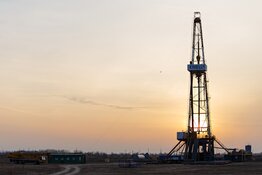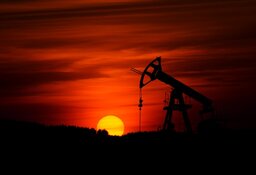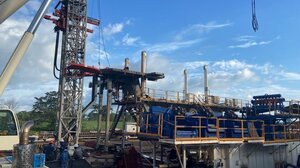Luc Mageau: If you look at the range that WTI traded around in 2009, it actually went from a low of $34 up to a high of $81. If you compare that to 2010, year to date it has traded from a low of $68 up to about $86. What's interesting is that the bottom of the range has come up, but the top really hasn't expanded very much. Over the short term, it really is anyone's guess what oil prices are going to do.
If oil prices, at least the top end of that range, are to move higher, some incremental demand needs to come from the United States. Given the economic situation there I don't know if that's necessarily going to be the case. For the next year, we're seeing oil trade in the $70–$90 barrel per day (bpd) range; at least until U.S. demand really starts to pick up.
TER: In the meantime, could China step into the breach in terms of demand?
LM: Absolutely. I mean that's always the wild card with oil. Chinese demand and even Indian demand for that matter can play a trump card when it comes to these prices and increase the demand outside of the U.S. quite substantially in relatively little time.
TER: What oil price are you using in your short- and long-term models?
LM: Next year we're assuming a price of $80, right in the middle of that range. Obviously, at some points throughout the year, there will be highs and lows around that range. Long term, we're at $95; and if you wanted to, you could easily paint a much more bullish scenario than that.
TER: What's your outlook on gas? It's probably not quite so bullish.
LM: Gas is an interesting story. If you look at Canada, gas production is at the lowest point it's been in the last five years; that's really a function of the drilling that's been going on. Producers here really aren't drilling, save for a couple of plays like the Montney Shale and others that have good natural gas liquids (NGL) components.
The situation in the States is much different. Gas production is way up; in fact, it's at the highest level it's been at in the last five years. Even with gas at $3.80, producers are still drilling because these shale gas plays and the horizontal drilling are making them economic with gas at $3.80. And the ownership structure of many of these plays is forcing a lot of producers to drill just to retain their leases. So, for the short term, we're definitely seeing that there's going to be a cap on the gas price. If the price exceeds that cap, producers will likely start drilling more wells or at least bring more wells on that have already been drilled, which should drop the price back down. We think gas prices are going to stay below $5 for the short to medium term.
TER: You cover mostly small-cap oil and gas (O&G) companies. Last week, the Canadian dollar briefly went above par with the U.S. dollar. How is a stronger Canadian dollar versus the greenback affecting Canadian oil and gas producers?
LM: Most Canadian producers still sell a lot of their production and realize revenues in U.S. dollars. So, when we see a rise in the Canadian dollar against the USD, it's actually a negative for a lot of the producers up here. What compounds that issue is the fact that all the operating costs are still in Canadian dollars, thus a rising Canadian dollar really puts pressure on a lot of these guys' netbacks and their bottom line.
Now the saving grace is that, over the last couple of years, a rise in crude prices typically has been followed by a rise in the Canadian dollar and vice versa. So, when crude prices increase, there has been an accompanying rise in the foreign exchange rate. This effect has dampened the impact somewhat, at least over the last couple of years.
TER: Does that mean these small O&G companies aren't quite the investments they used to be?
LM: I don't know about that. It's still a commodity-based environment where higher commodity prices are going to dominate the move in exchange rate, making for better economics.
TER: Judging by your analyst reports, you're still finding a lot of value among the small producers even with a stronger dollar. In one of those reports, you talked about the Williston Basin, which stretches across a large portion of central North America. The Bakken Shale is in that basin and most people know that name. But there are other formations in the basin that are starting to get some attention, one of which is the Viking Formation in southwestern Saskatchewan. Could you give us some background on the Williston Basin and some of its prospective non-Bakken formations?
LM: Sure. The Williston is a vastly prolific area—one of the most prolific concentrations of onshore oil discoveries in all of North America. It covers an area of about 600,000 square miles. When we looked at the Williston Basin, we realized we really had to study all the formations. In all, we looked at 11 different producing formations, including the Bakken, to see which ones were the best and to identify up-and-coming plays.
There's no disputing that the Bakken is still the king of the Williston formations. But we found several formations in the early stages of development that look like they could be the next big oil resource play. We identified a few, but the Viking is certainly one of the big ones. What makes the Viking so special is that it is truly a blanket formation. When it's drilled, there's not really much concern among the producers about whether or not a well is going to hit the formation. It's really just a matter of what kind of production it gets.
TER: In layman's terms, what's a blanket formation?
LM: It's essentially a broad-reaching formation. That means that over a large area of land, you can be reasonably assured that oil-bearing rock exists.
The reason the Bakken is so prolific is because it's the biggest blanket sand in the Williston. You can be reasonably assured that in any stretch one direction or the other around the field there will be Bakken oil.
Traditionally, producers would have to obtain a seismic survey and even do a test well before undertaking a full development. But now with a lot of these resource plays like the Bakken, and now the Viking, you don't actually need seismic. You can just drill the wells and be comfortable that the oil is going to be there.
TER: What kind of oil are they getting out of the Viking? Is that heavy crude?
LM: No. The Viking is all light oil. It's typically in the mid-30s for an API (American Petroleum Institute) range. It's sweet, so it doesn't have a lot of sulfur content. It doesn't have a lot of associated water production either. That usually translates to pretty good realized prices in and around WTI pricing. It also means that operating costs from the play are usually lower, typically around $11 a barrel. What all that comes down to is high netback. When a barrel of oil is sold for $80, essentially $40–$50 of that is translated to cash in the bank.
TER: What's the cost of drilling like? That can sometimes eat into your profits, as well.
LM: The good thing about the Viking is that it's a shallow play. It's about 700 meters or 2,100 feet deep. On top of that, producers are drilling shorter-length horizontals, usually about 800 meters in length or 2,400 feet. All in, that's about 5,000 feet total well length. That translates into cheap drilling costs. It's about just $1.2 million to drill and bring a well onstream. With sweet oil, a shallow formation and cheap drilling costs, the wells are paying out in slightly over a year. As a result, capital is recovered quite quickly. That means that after the first year, producers can just bank the cash or put it back into the ground for future growth.
TER: All right. What are some companies with exposure to the Viking Formation?
LM: There are a lot of producers that have some exposure to it. The big players are guys like Penn West Energy Trust (NYSE:PWE), Baytex Energy Trust (TSX:BTE.UN), and Crescent Point Energy Corp. (TSX:CPG). But to really get exposure to the play you have to look at the smaller players.
Two, specifically, have large concentrated positions: Novus Energy Inc. (TSX.V:NVS) and WestFire Energy Ltd. (TSX:WFE). Novus is spending considerable time in the Saskatchewan Viking. It's amassed 82 sections of land (or ~52,500 acres) and more than 200 future drilling locations. It's going to drill another 11 wells this year and double production year-over-year. All of that growth is essentially going to come from the Viking.
The other player is WestFire. It's truly the leader in the Viking, with 237 sections (151,700 net acres) of land and more than 500 future locations. We're expecting the company to drill another 14 wells this year and bring production to the 3,600-bpd range. WestFire's only one of a few producers that have Viking exposure both in Saskatchewan and Alberta and are really leading the pack when it comes to finding better ways to optimize development.
TER: You mentioned WestFire's production. What sort of production is Novus getting?
LM: Novus is about 1,000 bpd right now. It's expected to go up to the 2,000-bpd range by the end of the year.
TER: You've got some aggressive targets on both of these companies. Do they both have cash and enough money to keep drilling? How are their catalysts for further growth?
LM: Novus has $17 million of cash in the bank. Over and above that, it's got a debt line that's unutilized and should almost exit the year without having to use that. Going into next year, between that and cash flow, it should be all right.
The beauty of the Viking is that the wells aren't very expensive to drill. Each well is $1–$1.2 million to put into production. By deploying $20 million into a play like this, producers can get 16–20 new wells and increase production without having to spend a lot of money or go back to the market for capital very often.
TER: Between WestFire and Novus, do they have what the market would consider highly prospective ground?
LM: Yes, both players do. The Viking play is still emerging, so what ultimately is highly prospective and less prospective is still not very well known. It's really hard to say who has better land at this point. We know some areas that are starting to look like sweet spots, the Dodsland area is one of these. Producers have been drilling wells in that area that have been as good as or better than typical wells. The South Plato area also appears to be more prospective. But, other than that, there's no real definitive answer concerning which areas are more prospective than others at this point.
TER: So what's your target price on Novus?
LM: Novus' target price is $1.10, and it's about $0.85 now.
TER: And WestFire?
LM: WestFire is a $10 target price, and it's trading at $5.50 right now.
TER: You have some significant target prices on a number of other junior producers that you like. Can you tell us about some of those?
LM: Sure. Given the price disparity between oil and gas right now, we definitely have a bias toward oil-producing companies. My favorites are companies that have large oil weighting on the production end or with potential to expand that business. My top two picks are Reliable Energy Ltd. (TSX:REL) and WestFire, which we just talked about. Other companies include Renegade Petroleum Ltd. (TSX.V:RPL) and NuLoch Resources Inc. (TSX.V:NLR). All four companies have high oil weightings, they all have a strong presence in the Saskatchewan or Manitoba areas and they all have large undeveloped land packages.
TER: Certainly some common threads there. Let's move on to some predominantly gas plays. Among the gas plays, you've got a $9 target price on Advantage Oil and Gas Ltd. (NYSE:AAV; TSX:AAV), and it's trading at $6.38 right now. Can you explain why you have such a high target on what's largely a gas play?
LM: If you're looking for a gas producer, certainly you'd want to pick someone that has a concentrated land position in a play with. . .low operating costs. The Montney is a play that has both of these attributes. Advantage is definitely one that's making its presence known there. The company's got a large Montney land block that's just offsetting Encana Corporation (TSX:ECA; NYSE:ECA) in Alberta. It's recently completed a 50 million cubic foot per day (MMCF/d) facility, and it's going to be completing another 50 MMCF/d facility in 2011. That should bring the company's production up over 30,000 barrels of oil equivalent per day (BOE/d) range. Half of that is going to be coming from the Montney.
The key to the Montney is that not only does it have some natural gas liquids that come with gas production, but it's also got very low operating costs. For Advantage, that means operating costs from that play of less than $4 BOE. So, even in a low gas price environment, producers can make those plays economic. That's really the key for Advantage.
TER: What about some others?
LM: Sure, one is Cequence Energy Ltd. (TSX:CQE). Cequence is really two plays: A Deep Basin player and a Montney player. The company's focus more recently has moved to the Deep Basin. It recently bought a private company called Temple Energy, Inc. Through that, it acquired about 3,500 bpd of production; so its production has shot up. Basically, that's brought Cequence close to the intermediate range. Next year, it should be in the 8,000-bpd range, which will be quite a big difference from the 3,500–4,000 that it was producing before.
Another one is Open Range Energy Corp. (TSX:ONR). Open Range, essentially, is a Deep Basin gas producer. It's producing about 3,500 BOE/d right now. The good thing with Open Range is that it's got a largely contiguous land base in the Deep Basin area. It operates its own infrastructure, which means that it's got lower costs.
TER: Where is the Deep Basin?
LM: It's in northwestern Alberta along a ridge that runs along the Alberta border, just east of the Rockies. It's called the Deep Basin because all the formations there are deep—more than 3,000 meters below surface, or about 10,000 feet.
It tends to be a little bit more expensive to drill, but producers usually get several pay packages from one well. For instance, when Open Range is drilling verticals, it can get up to 11 formations in one vertical well. That means the company can get production from all 11 formations in one wellbore, which helps keep costs down and makes vertical wells a bit more prolific.
TER: What's your target price on Open Range?
LM: We have a target price of $2.25. The company is currently trading at around $1.30.
TER: That would be a big increase. What's your target on Cequence?
LM: Cequence has a target price of $2.50. It's currently trading at $1.80.
TER: Are you noticing any trends right now among the small Canadian producers?
LM: There certainly is a movement toward oil production. Even the gas producers are trying to find oil plays on their existing land or trying to buy land that has exposure to oil. That's due to the disparity in economics between oil and gas. At $80 crude, producers have very good margins. At $4 gas, they're hardly making much at all in most plays. The oil producers are drilling a lot of wells and getting production up. All the gas producers are trying to find oil wells.
TER: Do you have some parting thoughts for us?
LM: Over the near term, I think it's going to be a stock-picking environment rather than a commodity-driven environment. I don't think you're going to see wide swings in valuations coming from commodity price movement. For the next while, it's mainly going to be about picking good companies that are going to increase production given the suite of assets that they have. I think that's going to be the environment here at least for the next year.
Luc Mageau joined Raymond James in March 2006. He was promoted to equity analyst in May 2009 and is responsible for covering junior and intermediate oil and gas producers. Prior to joining the firm, Luc was employed as a commercial lender at a major bank and as a research analyst at a U.S.-based equity research firm. Educationally, Luc has a bachelor of commerce degree from the University of Alberta (2001) and holds the Chartered Financial Analyst designation.
Want to read more exclusive Energy Report interviews like this? Sign up for our free e-newsletter, and you'll learn when new articles have been published. To see a list of recent interviews with industry analysts and commentators, visit our Expert Insights page.
DISCLOSURE:
1) Brian Sylvester of The Energy Report conducted this interview. He personally and/or his family own shares of the following companies mentioned in this interview: None.
2) The following companies mentioned in the interview are sponsors of The Energy Report: Novus.
3) Luc Mageau: I personally and/or my family own shares of the following companies mentioned in this interview: None. I personally and/or my family am paid by the following companies mentioned in this interview: None.








































